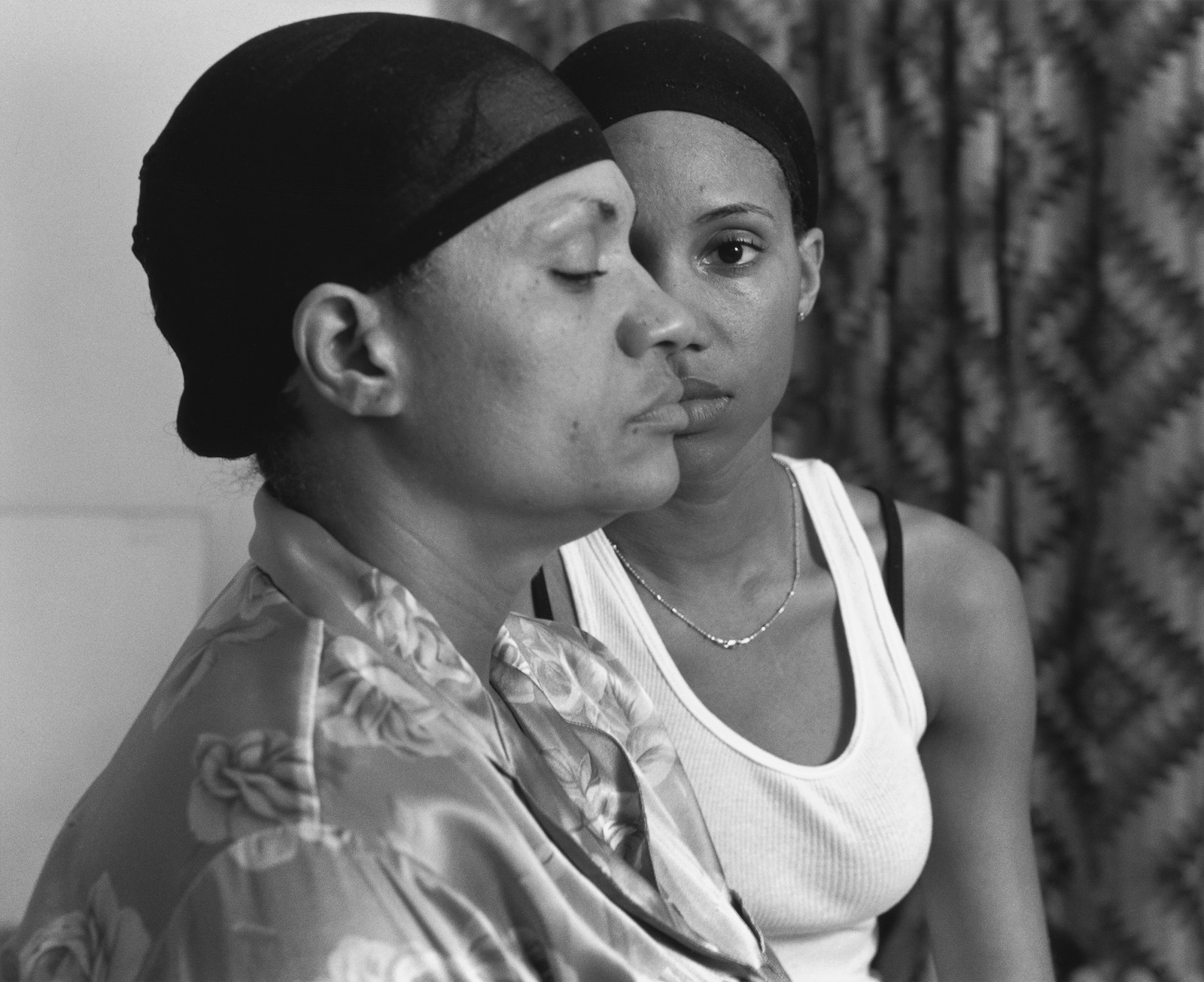In the winter of 2010, the photographer LaToya Ruby Frazier strapped knee pads over her leggings and pulled on a pair of Levi’s blue jeans. The denim brand had just opened a popup shop on Wooster Street in lower Manhattan to promote a new clothing line designed around the motif of the “urban pioneer.” For the site of its ad campaign, the company chose Braddock, Pennsylvania, aestheticizing the town’s post-industrial landscape in a series of images plastered across magazine pages and New York billboards, and making it appear as a place in motion with ample economic horizons for any working American. “Go Forth,” one ad instructed the viewer over a black and white image of a horse flanked by two denim-clad supermodels. It couldn’t be further from the truth.
Wearing combat boots, a cap, and thick industrial gloves, Frazier, who was born and raised in Braddock, crouched on the sidewalk outside the Manhattan store and began dragging her lower body back and forth over the pavement, first her thighs, then her knees. The moves were choreographed, taken from footage of steel industry workers on the job, and meant to create a dissonance between Levi’s glossy campaign ads and the reality of life in a mill town after a long period of decline. Frazier’s repeated motions made a rough, scratching sound, and the jeans she’d worn began to fray. By the end of the hour, they were in tatters, hanging from her legs.
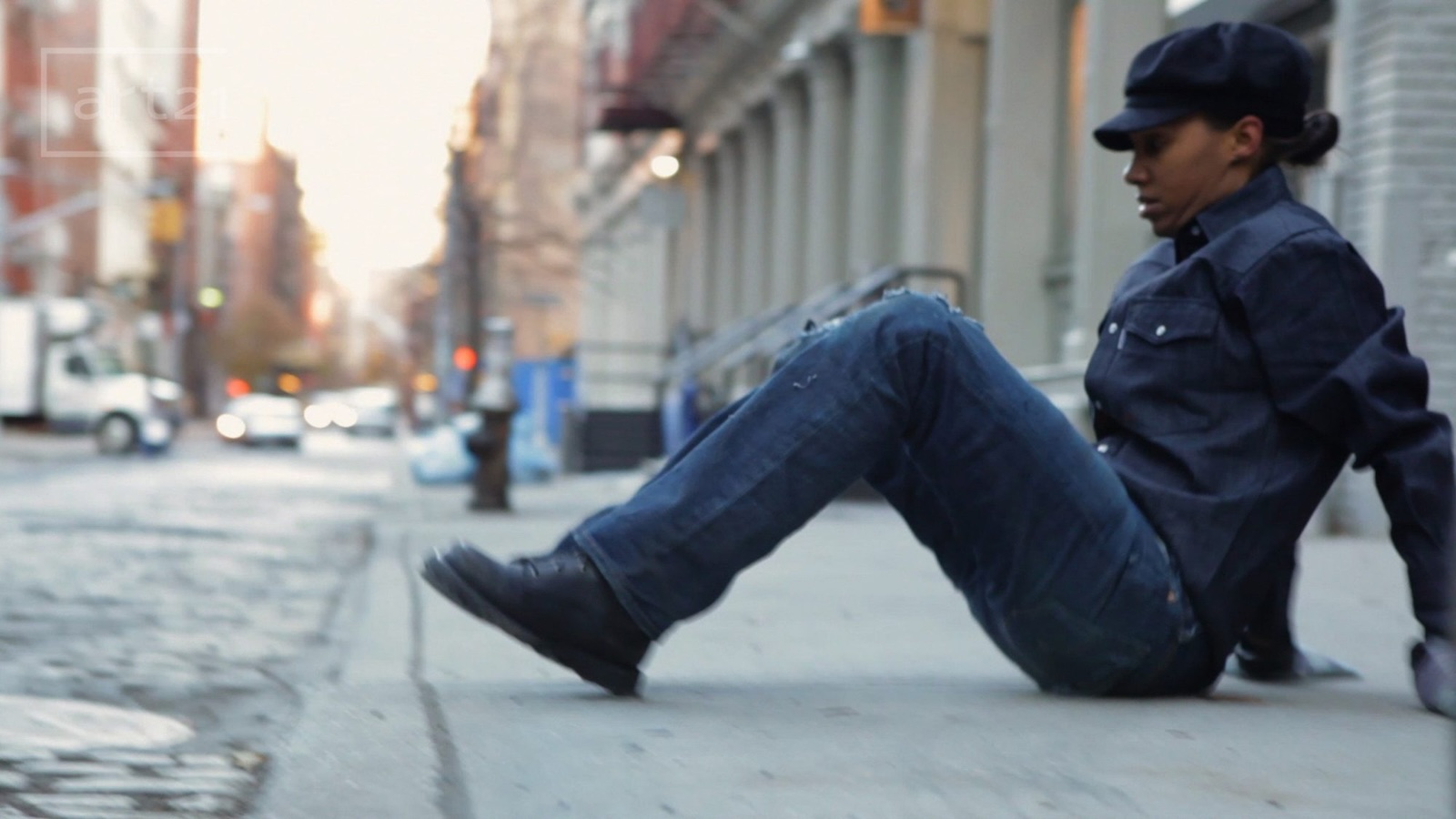
The short film documenting the performance, LaToya Ruby Frazier Takes on Levi’s, shot by the visual artist Liz Magic Laser, is currently on display at the Museum of Modern Art in New York, part of the exhibit “Monuments of Solidarity,” which showcases more than two decades of Frazier’s work. Themes of deindustrialization, environmental injustice, and unequal healthcare access are present throughout the photographs on view. From Braddock to Flint, Michigan during the lead drinking water crisis to Lordstown, Ohio in the aftermath of the General Motors layoffs, the artist captures communities facing economic declines, not as a single catastrophic event, but as a process initiated by the country’s power brokers and borne by ordinary working-class people. In many towns, what’s primarily left from the industrial past is the pollution, which continues to accumulate in the soil and the water, making people sick even as the hospitals shutter from disinvestment.
What is the purpose of this documentation? Frazier has said that she feels called “to stand in the gap between the working and creative classes,” to use photo-making as a means of resisting “historical erasure and historical amnesia,” symptoms of an economic and political system that discards communities whose labor it no longer deems valuable. She does this by not only taking pictures of working-class people, but also by treating her subjects as “collaborators” and displaying their testimonies alongside their portraits. Some of Frazier’s portraits may look like so much documentary work you’ve seen, but she’s not interested in photography as an isolated or objective act. No art for art’s sake; she invites communities to see themselves in a different way — as historical subjects, as agents in a broader struggle — a step toward believing that they are not powerless.
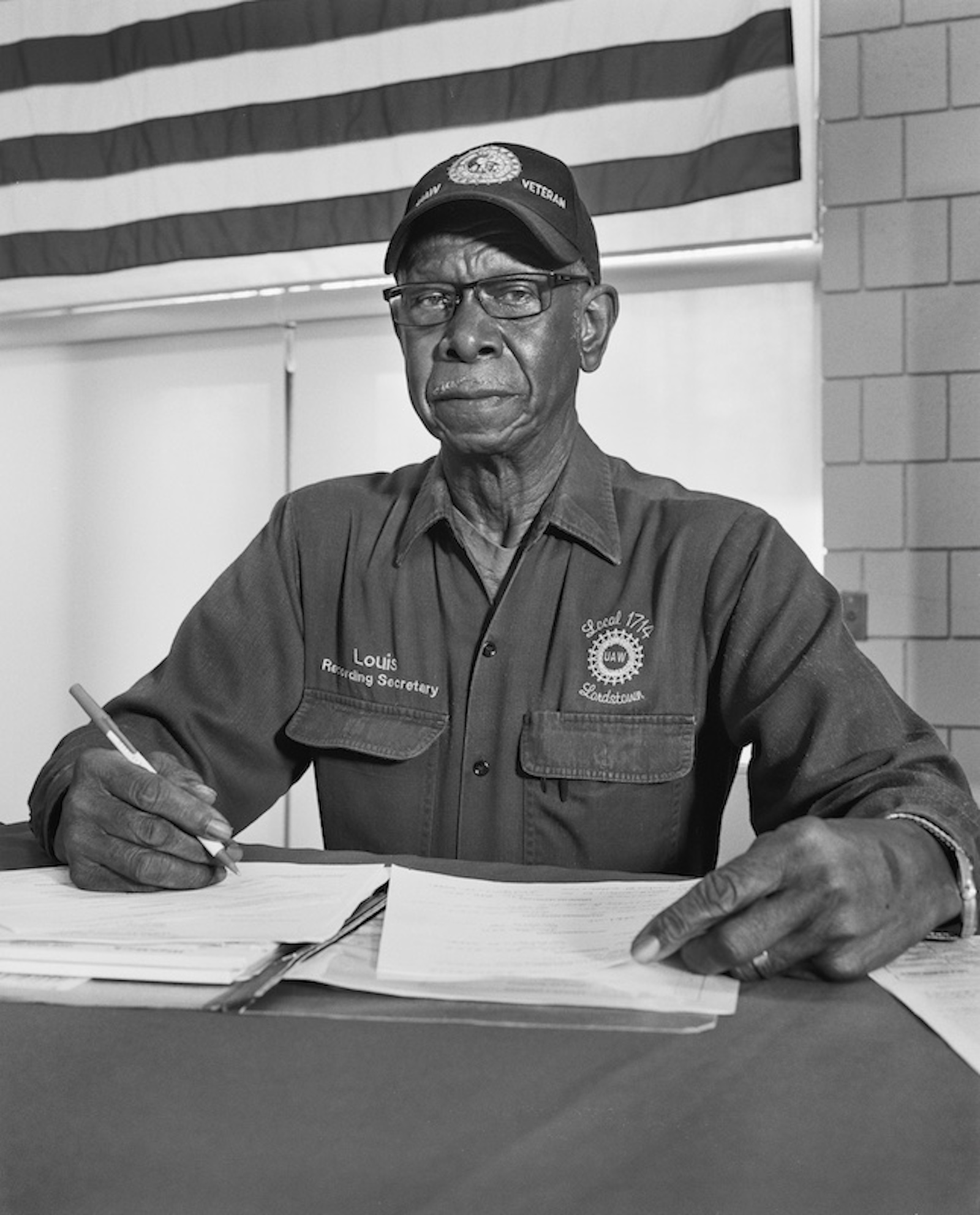
LaToya Ruby Frazier; courtesy LaToya Ruby Frazier / Gladstone Gallery
That the awareness of a person’s agency can alter their lived experience is not theoretical. For half a decade, I’ve reported on communities reckoning with legacy pollution and unbridled industrial expansion, and along the way, I’ve found that a deep sense of the past can have a galvanizing effect. To recognize oneself as belonging to a wider context or system is to also imagine a world beyond its daily injustices, one worth fighting for: What if the chemical company built someplace else? What if the district had the resources to offer its children a future?
I saw this firsthand in my home state, Louisiana, where a maze of petrochemical infrastructure clings to the banks of the lower Mississippi River, dumping cancer-causing chemicals into the air and water of predominantly Black towns, some of which were founded by formerly enslaved people more than a century ago. The people of “Cancer Alley” describe the plants as only the most recent installment in a long arc of racial injustice. Plantations once stood on the mammoth tracts of land where companies like Exxon Mobil, Occidental Petroleum, and BASF erected smoke stacks and ethylene crackers. By telling a different story about their communities, and placing themselves at the center of it, local advocates have had some success in challenging proposed industrial projects in court, arguing that building new facilities over the graves of their enslaved ancestors amounts to a violation of their civil rights and the desecration of historic sites.
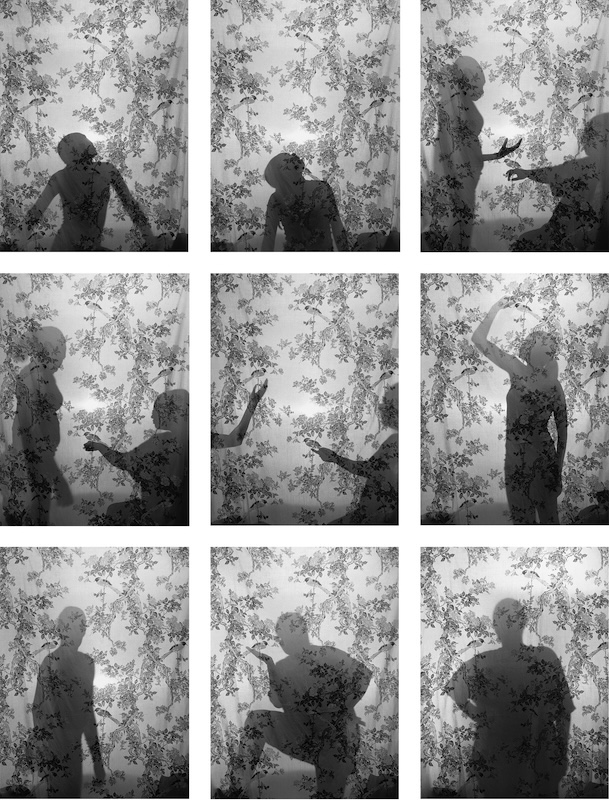
Before Frazier could open anyone else’s eyes, she started at home. She was 16 when she first picked up a camera and began photographing herself and her family. In an article timed with the opening of “Monuments of Solidarity,” Frazier describes how she once felt a simple, but no less deeply felt, connection to Braddock as the place where she was born and raised. Witnessing its landscape through her camera’s viewfinder changed that relationship: “My spiritual bondage to Braddock was broken the instant light exposed my film’s silver halide crystals as I created “United States Steel Mon Valley Works Edgar Thomson Plant” (2013), hovering over the city with a bird’s-eye view,” she wrote. “Permeating the 21st century postindustrial landscape were the vestiges of imperial war, patriarchy, and the death and destruction of nature.”
“Monuments of Solidarity” opens with these early works, which are part of her collection “The Notion of Family” (2001-2014). Her primary subjects are herself and the matriarchs that raised her, her mother and grandmother. “I was combating stereotypes of someone like my mother and I,” who are often portrayed as “poor, worthless, or on welfare,” she explained in a 2012 documentary about her work. “We find a way to deal with these types of problems on our own through photographing each other.”
Frazier shot the images on black-and-white film using only the available light. The effect is a sense of intimacy, an impression that the women were asked to look up in the middle of what they were doing or feeling. There is her mother, working the bar at a local restaurant, and again, leaning over the sink with her chest exposed, a jagged scar across her breast, the mark of a recent surgery. In Frazier’s emergent story of herself, the town plays a role, too. Images of Braddock’s abandoned buildings, criss-crossing railroad tracks, and faded billboards are interspersed among the portraits. In one such photo, a mural on the side of a building reads: “JESUS SAID! YOU MUST BE BORN AGAIN! OF WATER & SPIRIT.” Amid images of a run-down Braddock, this one serves a dual function, alluding to local officials’ failed attempts at revitalization and affirming that any rebuilding would have to come from the people themselves, the true witnesses of their own experience.
As a storyteller, Frazier doesn’t confine herself to one frame, and frequently uses multiple images to draw connections and offer more complete views of how she sees things. In this mode, Frazier recontextualizes the industrial plant as not just a place to work; she situates it within a broader experience of life. What happens in the plants follows workers into their homes. They suffer the health effects of prolonged chemical exposure. They endure the impacts of job loss.
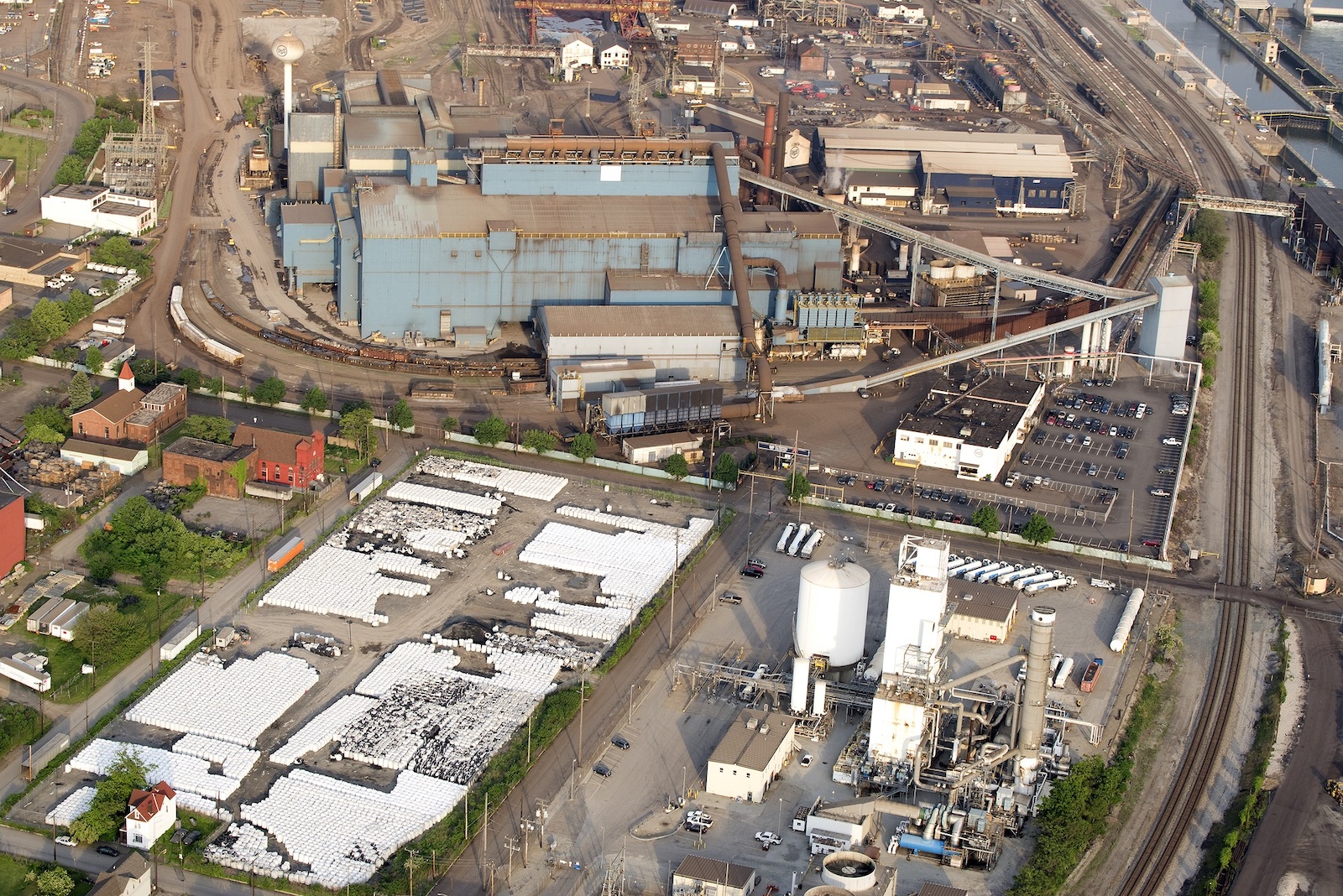
LaToya Ruby Frazier; courtesy LaToya Ruby Frazier / Gladstone Gallery
In one two-panel work, an image of her mother on a hospital bed is placed beside a photo of a demolition site. The slant of her mother’s body and the rope of wires connected to her skull rhyme with the tangle of rebar and concrete of the crumbling building. A nine-panel series shows Frazier and her mother posing behind a patterned cloth, just their shadows visible. The names of the industrial chemicals in Braddock’s air adorn the wall around the frame: benzene, toluene, chloroform. “Your environment impacts your body, and it shapes how you perceive yourself in the world,” the photographer said in the documentary about her work. And in the triptych “John Frazier, LaToya Ruby Frazier, and Andrew Carnegie” (2010), a photo of the artist as a child is set between a historical plaque about John Frazier, a fur trader and frontiersman who aided George Washington in the French and Indian War, and Andrew Carnegie, the industrialist and philanthropist who built Braddock’s first steel factory. With this work, Frazier wrote, she is posing a question: “Weighed against the two colossal Scotsmen that dominate Braddock’s history, what is the value of a Black girl’s life?”
It’s well worth interpreting Frazier’s subsequent work as her own answer to that question. In 2016, she spent five months living in Flint, Michigan, photographing residents as they lived through the worst days of the city’s lead drinking water crisis. Like Braddock, Flint experienced a prolonged deindustrialization crisis, with General Motors slashing its local workforce from 80,000 in 1978 to under 8,000 by 2010. Over the same period, the city’s population nearly halved. The public health emergency started in 2014 after the cash-strapped local government elected to divert the city’s water source from the Detroit Water and Sewerage Department to the Flint River, causing levels of bacteria and lead in the city’s water supply to spike. While in Flint, Frazier met Shea Cobb, a local poet and activist, and her daughter Zion, whom she would come to document across the three-part series, “Flint Is Family.” Like Frazier’s mother, who helped stage and shoot many of the portraits in Braddock, Cobb became someone who had a say in the work, an artist in her own right.

Over the years, Frazier followed Cobb and her daughter as they moved in with Cobb’s father in Newton, Mississippi, where they sought refuge from the lead crisis, lived closer to nature, and learned to care for horses. She also photographed the family as they moved back to Flint after Zion experienced discrimination in her Mississippi school. The photographs from Newton and the family’s return to Flint depart from the black and white of Frazier’s earlier photography, creating a sense of vibrancy and forward momentum in spite of the hardships they faced. In perhaps the most striking photograph of the series, Zion poses on a horse, one hand on her hip, flanked by her mother and grandfather, also on horses. The three generations stare down the camera defiantly.
“We laugh sometimes to throw off the frustration,” Cobb said in a text accompanying one of her portraits in the exhibit. “We brush our teeth, we laugh.”
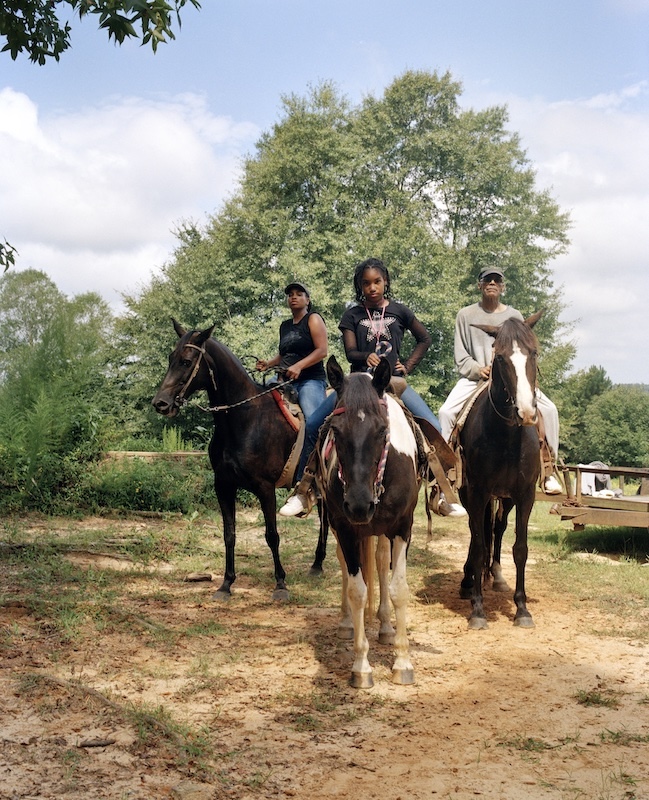
In the end, Frazier’s work engages an enduring, if cliche question: Can art change things? On one of her trips to Flint, Frazier learned about the invention of an atmospheric water generator that could supply clean water to the most neglected areas of the city. When local officials indicated that they weren’t interested in the technology, Frazier decided to use funds from an exhibit of her early photos of Flint to pay for the machine’s transportation.
The process is incremental, a slow revealing of places and people once unseen, cast in new light. Can journalism change things?

